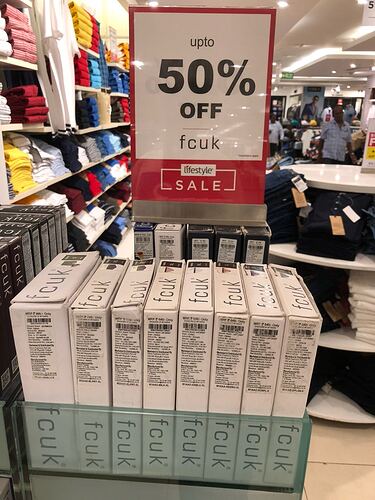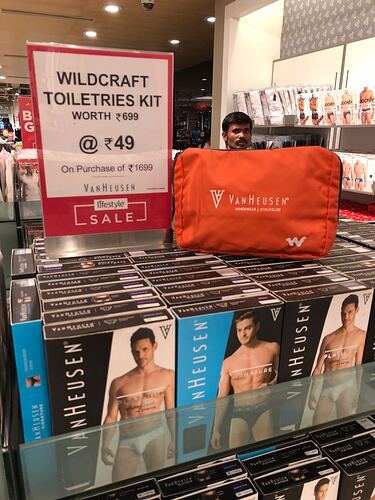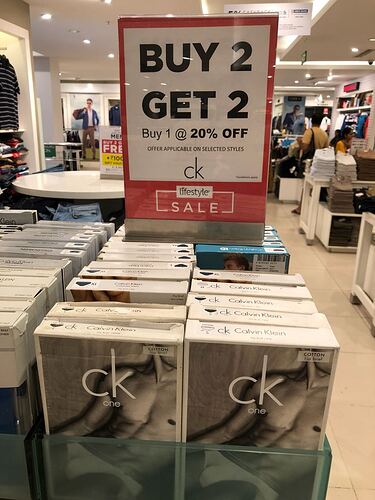They are correct about the reason for soft quarter, festive season has indeed shifted into Q3, most other consumer companies also got impacted.
My view on current valuation of the FMCG companies is this , I am copying from my own portfolio thread - “The affluent+upper-middle+middle-middle will grow from current 25-28 crores to 56-60 crores . The target market becomes 2 times for consumer companies in just the next 7 years. Sales of these companies grow by 2-3 times in the next 7 years , the profits will grow by 3-5 times due to margin expansion. As I do not expect any further PE expansion , so the expected return on these investments : 3-5 times in next 7 years.I do not see major PE contraction either as the sales in these companies is expected to grow again significantly between 2025 and 2030.”
So 2025 will be the testing time for valuations , as the future will be in question again based on our knowledge then, but the theory of target market doubling in next 7 years is something I firmly believe in. My take is that the market over the last few years has come to the realisation of how “sure” the above fact is and hence is ready to take a chance till next 5-7 years. That something is more probable than another makes the something more costly to buy pretty fast.
BTW I have studied the sales growth of HUL and compared to the market growth in last 5-7 years, and even the cycle before that , and they seem highly correlated. Only thing is every time the target market doubles , it grows by a huge number , and brings in newer economies of scale.
On margin expansion front - I have studied 3M India, and see how it is possible to expand margins and deliver handsome returns. It is possible that margins in most consumer companies hasn’t peaked out yet.
I invite other members to comment if they see merit in the above theory.
Past is good indicator for future in stable compounders like FMCG
In last 10 odd years Indian Upper Middle class grew by 3 X while FMCG like Nestle / HUL CAGR was 11% both for revenue and profits . So safely we can take CAGR of 11% for next 7 years also . Which means they will double their revenue and profits in next 7 odd years.
( Now downside to this assumption is last 5 Earning CAGR for NESTLE is 5% )
Now Historically Good FMCG PE has been moving between 22/25 to 50 odd … so you can see in next 7 years if there s no PE derating they will double from today’s price whereas if they go back to historical low PE they will be give near zero returns .
On an Avg we can assume CAGR of 5% in stock price returns for these stocks from current valuation .
(post withdrawn by author, will be automatically deleted in 24 hours unless flagged)
Precisely for this reason I have taken 11% odd CAGR which is reflective for most of FMCG companies like ITC , P&G , HUL and Nestle ,
Now on PAGE - is not pure FMCG company ( it is apparel company) + it does own the brands it markets so it more like distributor with exclusive licence . We have very few parallels for such companies to compare …and hence I as investor will seek higher MOS .
Why are you trying to invest like big fund managers?
If that’s your goal, you are better off with low cost index fund which will beat most of the big funds.
Big funds have many restrictions. They can only invest in sizable liquid securities without moving the price a lot. They cannot hoard and sit on cash to wait for better opportunities. In comparison, we can be more nimble and have larger universe of opportunities to explore. If we use our advantages properly, we can beat most of the big funds easily.
@Divyanshu_Bagga
I’m aware of that 100% and all the various restrictions. I have also advocated index funds heavily on this forum.
I just dont understand why valuations are so high. Page should do atleast 12-15% cagr from these levels in the next 5 years. That itself seems unlikely.
Keeping realistic assumptions if page grows PAT at 15cagr for the next 5 years what can we achieve in terms of returns. That is the question… Its simple with quality companies like page industries.
Even a simple DCF would give us an idea. If the valuations were reasonably above the dcf valuations we would get a better idea.
When did I say that that was my goal… Let us stick to page industries and try and see what sort of returns the stock can generate from here.
It is a well covered stock there cannot be severe inefficiency in its valuation…
Thank you for your insightful comments on big funds and their restrictions.
At Lifestyle, Chennai in July 2018. Every premium brand was selling on some kind of discount or buy one get one free, etc. whereas Jockey was selling at MRP with at least 4X the space and inventory of all the other brands put together.
And then Jockey…![]()
This is good and bad. Others are not listed. They can dilute margins to gain sales. In the process can give fierce competition to jockey. Ultimately investors of page have more to lose.
I think Jockey’s success have shown that good quality undergarments supported by distribution and brand can generate good returns. Hence this space is attracting lot of players. Lot of branded players in garments (like Van Heusen) have started entering into the space earlier dominated by Jockey. Hence I expect competitive intensity is going to increase thereby limiting sales growth as well as bring pressure on margins. This also means price multiples (PE) of the past would be difficult to maintain going forward. Not related to this, but I have similar opinion about Eicher (Royal Enfield)
In general, crowded places rarely make money for the investors. Case in point airlines or cars or telecom sector in India
Disc - not invested in any stocks mentioned above. Watching from business model profitability study point of view
Very Interesting Analogy …by Amit Jeswani
Page Industry V/S Hanes (Hanes) – Ofcourse this needs no Introduction, what a class compounder this Page (Jockey) has been.
Page has Increased sales from 250Crores in 2009 to 2500crores in 2018 (30% Compounder) and in the Year 2018 it made a profit of 346 Crores. The Company trades at a Market cap of 30000 Crores or 4.2 Billion Dollars (That’s a Whooping 86 PE FY2018).
Hanes the Global Market Leader of Inner Garments is present in 80% of USA Households has Sales of 46,800 Crores and a Normalized Profit of 4300 Crores this year.
Interestingly the Profit of Hanes is 1.8x the Sales of Page Industry though Hanes get a Market cap of 5.6 Billion $ v/s 4.2 Billion$ for Page Industry.
Takeaway from your post could be that… Hanes has achieved 46800 of sales, in a less populated geography, in comparison Page appears to have only scratched the surface with 2600 of sales given the population.
Agreed . Jockey sales can move from 2500 cr to 45000 cr in say next 10/15/20 years . But it is already valued at that level - that is point of Page vs Hanes comparison .
I am illustrating - how I will buy a typical midcap FMCG stock whose cash flows are more predictable . No recommendation here
Assuming Page is stable compounder with min disruption in next 10 years . Lets take cash flows for investors as you mentioned …
Current Dividend is 131 Rs ( payout of 42% ) – Assuming it continues with same payout ratio
EPS gr by 18% for next 5 years and 15% thereon till 10th year … ( assuming 2 times Indian Real GDP Gr - for large cap this can reduce to 1.2 to 1.5 times GDP Gr. - this is how most FMCG companies make 5 year plan … )
PE in 10th year reaches 25 … and you sell in Year 10…
As per cashflow for investors even with equity premium of 13% … Fair value will come at Rs 11000 .
My buy price will be @ 20% MOS to fair price – > say Rs 8800 .
Now one may say it will never reach this price - fair enough – One need not play every stock in the market …
Thats a great question @dumboinvestor . I agree that retail investors wont move the needle for the discovered stocks. One can argue institutes can also be dumb. But here we are not talking about 1 institute. But there are multiple.
I find this very confusing. Because 1) We say Mr market knows everything and Mr Market is the final judge. 2) We cant justify the valuation of page ( and several other quality businesses) on a PE basis.
I wish someone had an answer to this. (Other than the usual answers like Moat/Longevity, Market Can Remain Irrational Longer Than You Can Remain Solvent etc)
@dumboinvestor your entire thesis and point of discussion seem to be that if institutions are paying a very high PE, therefore the company deserves it and it will sustain. This is grossly incorrect. Overvaluation persists for a time period, sometimes years, because of many years. And when the overvaluation bubble bursts, it takes years for the stock price to get back to previous levels.
Take a look at the stock of Microsoft, a great company, which took 16 years to get back to levels seen in 2000 during the dotcom boom. P&G US, arguably the biggest FMCG company in the world, took 5 years to recoup its 2000 highs, then another 5 years to get back to its 2008 highs. Similarly, it took Colgate-Palmolive 7 years to break out of its 2000 highs.
The simple point is paying too high a price is a recipe for disaster. Stocks, over 100 years of traded history, have NOT sustained at an extremely high PE for very long. Mean reversion inevitably happens and moderates the price. It can happen today, tomorrow or it may not happen in the next 1 year. The timing is not predictable. But what is sure is it will happen. The higher the price paid, the more the pain in store.
The rational thing to do is to side-step such extremely expensive companies or if one is compelled for some reason to buy it, to have a low allocation. There are 5000 odd companies traded in India. We don’t need more than 20 good stocks in our portfolios.
It is might be strange … but the fact is inertia & emotional attachment … , Lot of people don’t want to sell seemingly great stock . Lack of sellers keep the price high …
Now we all know story about Warren Buffett and Coca Cola .
Coca Cola has given zero returns from 1998 to 2018 ie 20 year zero returns still WB never sold it .
Even in my own software if I put Balance sheet , PL data , last 10 years of price history of Page … My buy price is 9200 and 100% exit price is 44000 for Year 2018 … so if I had page industries bought at lower levels - would I have sold my entire stock holding … My answer is no … even though I might have near zero return from the stock … It is kinda of strange … but that is reality for most of us …
@basumallick Thanks for the post. But the question is where are those 20 good stocks. ( I am talking about the businesses that we can easily understand, that we really want to own, quality, long term visibility). If you look at some of the businesses like inner-wear, jewelry, footwear, housing finance, consumer finance, private banking etc, the quality difference the leader and the other players is huge. ( with the exception of footwear where we have 2 quality players and banking ) . And that is reflected in the valuation. You wouldn’t want to own the other players in the segment at any valuation (At least for me)
I think the only option is to invest in debt instruments or invest in these companies with low expectation ( and time correction)
If one is absolutely not able to find 10-20 good stocks which one understands and is available at reasonable valuations, then it is better to stay in cash / debt funds, and start expanding one’s circle of competence. Unless the market is at a peak, there is usually always some good opportunities lurking behind in the shadows. You just need to keep doing the hard work of going over many many companies to find the right one. Buying the defensives at ultra high valuations is taking the easy (read, lazy) way of investing.
Not necessarily. There are times when just sitting on it can give zero or negative returns. Like Shailesh mentioned in the post above, Coca-Cola has not returned anything for 20 years. And that is a long long time to go without returns. As investing is a probabilistic game, It is important to align as many points in our favour as possible.
Another point I forgot to mention is that there are two aspects to investing - the business and the valuation. In some cases, the second or the third player in the segment may have a slightly inferior business model but valuation wise may be much much cheaper. Sometimes, purely from a stock price return perspective, the poorer business can be a better investment because of significantly lesser valuations. Case in point, Berger Paints has done much better than Asian Paints in the last 5 years, even though Asian Paints is a much better and more dominant business.
Thirdly, why would I want to take the pain of studying hundreds of businesses, keep up with the news about their quarterly results, attend concalls, read annual reports etc and get what I would anyway get if I invest in a Nifty ETF? Why not just do a SIP in a low-cost index fund instead?





